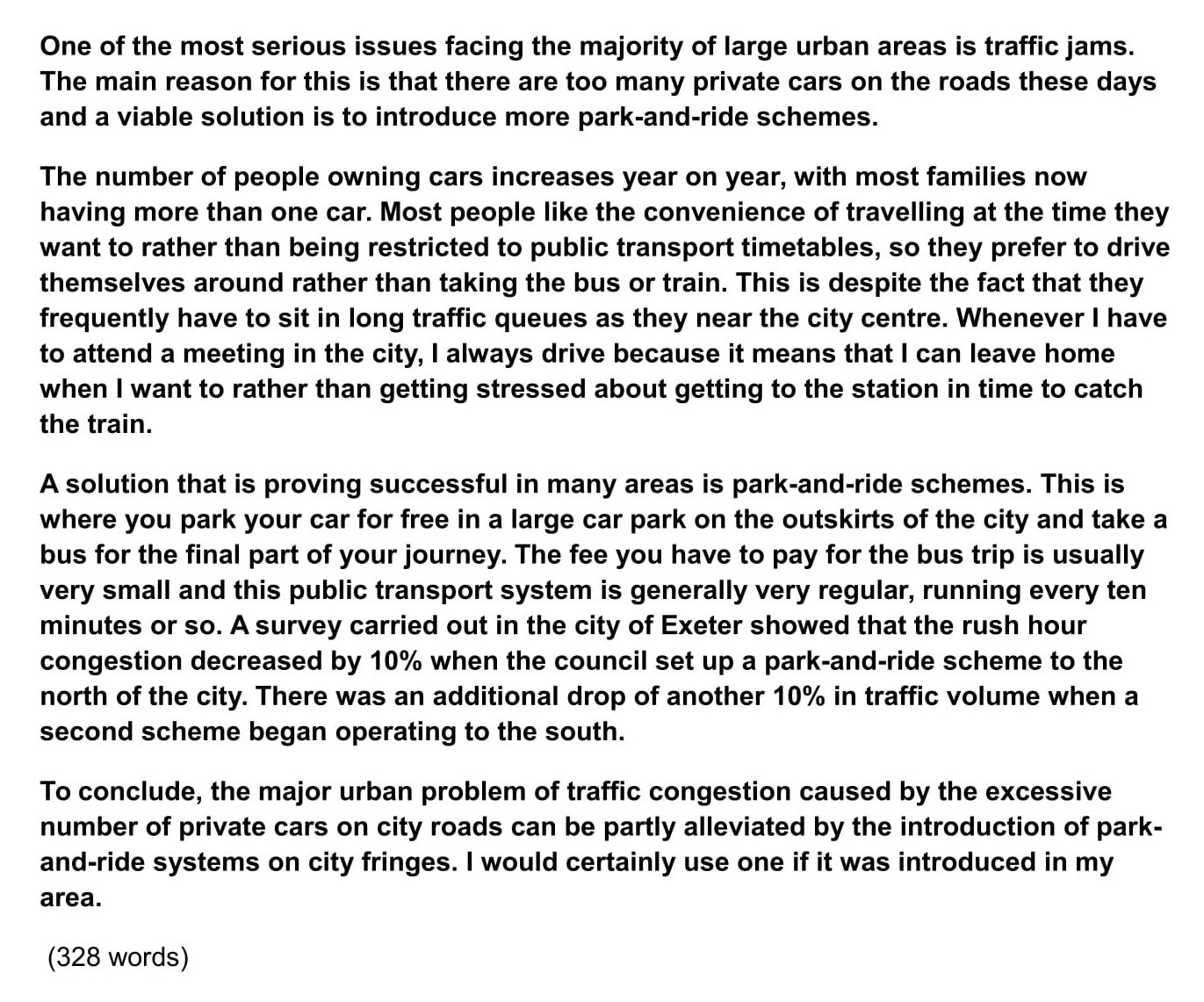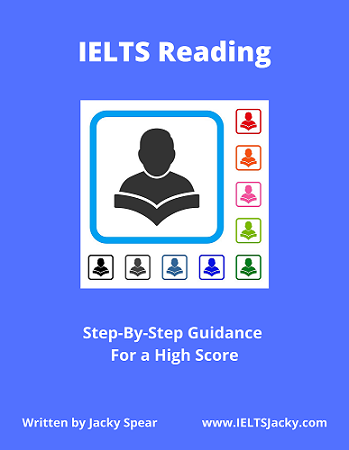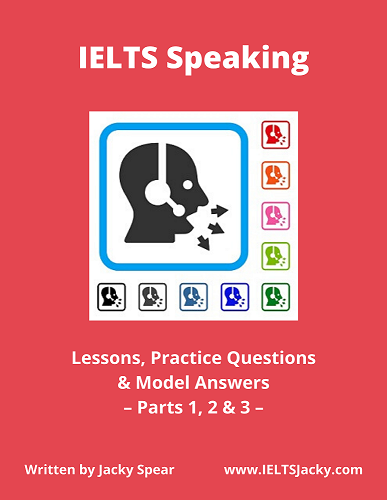How to Plan & Write
IELTS Problem Solution Essays
IELTS
problem solution essays are the most challenging essay type for many people.
The way they are worded can vary hugely which can make it difficult to
understand how you should answer the question.
Generally,
you’ll be asked to write about both the problem, or cause, and the solution to
a specific issue. Sometimes, however, you will only be required to write about
possible solutions.
The 3 essay types:
- Problem and solution
- Cause and solution
- Just the solution
Hence, it’s essential that you analyse the question carefully, which I’ll show you how to do in this lesson. I’m also going to demonstrate step-by-step how to plan and write IELTS problem solution essays.
Here’s what we’ll be covering:
- Identifying IELTS problem solution essays
- 6 Common mistakes
- Essay structure
Want to watch and listen to this lesson?
Click on this video.
Click the links to see lessons on each of these Task 2 essay writing topics.
Once you understand the process, practice on past questions. Take your time at first and gradually speed up until you can plan and write an essay of at least 250 words in the 40 minutes allowed in the exam.
The Question
Here
are two typical IELTS problem solution essay questions. They consist of a
statement followed by the question or instruction.
1. One problem faced by almost every large city is traffic congestion.
What do you
think the causes are? What solutions can you suggest?
2. Since the beginning of the 20th century, the number of endangered species has increased significantly and we have witnessed more mass extinctions in this period than in any other period of time.
State some reasons for this
and provide possible solutions.
These
are some examples of different ways in which questions can be phrased. The
first half of the questions relate to the problem or cause, the second half to
the solution.
What issues does this cause and how can they be
addressed?
What are some resulting social problems and how can we deal with them?
What problems arise from this and how can they be tackled?
Why is this? How might it be remedied?
What are the reasons for this, and how can the situation be improved?
Why is this happening, and what measures can be taken
to tackle this problem?
And
here are a few questions where you only have to write about the solution.
How can this situation be improved?
What solutions can you suggest to deal with this problem?
How can this problem be solved?
What measures could be taken to prevent this?
It’s
important that you are able to recognise the common synonyms, words and phrases
used in problem solution questions. Here are the key words and their synonyms used
in the questions above.
- Problem – issues, resulting, situation
- Cause – reasons, why
- Solution – deal with, addressed, tackled, remedied, improved, measures taken, solved, prevent
Before we move on to some common mistakes, I want to quickly explain the difference between a problem and a cause. Read the following examples.
Problem – I've missed the last bus home after visiting my friend for the evening.
Cause – I misread the timetable and thought the bus left at 22.45 when it actually left at 22.35.
The ‘cause’ is the reason for the ‘problem’. We’ll be looking at question analysis in more detail in a minute.
6 Common Mistakes
These
six errors are common in IELTS problem solution essays.
- Confusing problem and causes questions.
- Having too many ideas.
- Not developing your ideas.
- Not developing both sides of the argument equally.
- Not linking the problems and solutions.
- Not
being specific enough.
It
is common for an essay to consist of a list of problems and solutions without any
of them being expanded on or linked to each other. Sometimes, a student
will focus on just the problem or only the solution which leads to an
unbalanced essay. Both these issues will result in a low score for task
achievement.
You must choose just one or two problems and pick solutions directly linked to them. Explain them and give examples.
Another serious error is to write generally about the topic. You need to be very specific with your ideas. Analysing the question properly is essential to avoiding this mistake. I’ll show you how to do this.
Essay Structure
Now let’s look at a simple structure you can use to write IELTS problem
solution essays. It’s not the only possible structure but it’s the one I
recommend because it’s easy to learn and will enable you to quickly plan and
write a high-level essay.
1) Introduction
- Paraphrase the question
- State 1 key problem/cause and related solution
2) Main body paragraph 1 – Problem or Cause
- Topic sentence – state the problem or cause
- Explanation – give detail explaining the problem or cause
- Example – give an example
3) Main body paragraph 2 – Solution
4) Conclusion
- Summarise the key points
This structure will give us a well-balanced essay with 4 paragraphs.
One Problem/Cause & Solution or Two?
Most
questions will state problems, causes and solutions in the plural, that is,
more than one. However, it is acceptable to write about just one.
This will give you an essay of just over the minimum 250 words. To write about two problems/causes and solutions will require you to write between 350 and 400 words which are a lot to plan and write in the 40 minutes allowed.
It is better to fully develop one problem/cause and solution than ending up with one idea missing an explanation or an example because you run out of time.
The step-by-step essay structure I’m going to show you includes one problem and solution but you can write about two if you feel able to or more comfortable doing so.
How To Plan IELTS Problem Solution Essays
Here’s the question we’re going to be answering in our model
essay followed by the 3 steps of the planning process.
One problem faced by almost every large city is
traffic congestion.
What do you think the causes are? What solutions
can you suggest?
- Analyse the question
- Generate ideas
- Identify vocabulary
# 1 Analyse the question
This is an essential step in the
planning process and will ensure that you answer the question fully. It’s quick
and easy to do. You just need to identify 3 different types of words:
1. Topic words
2. Other keywords
3. Instruction words
Topics words are the ones that identify the general subject
of the question and will be found in the statement part of the question.
One problem
faced by almost every large city is traffic
congestion.
So, this question is about ‘traffic congestion’.
Many people will do this first step of the process and then write about the topic in general. This is a serious mistake and leads to low marks for task achievement.
What we need to do now that we know the general topic, is to understand exactly what aspect of traffic congestion we're being asked to write about.
The other keywords in the question tell you the specific topic you must write about.
One problem faced by almost every large
city is traffic congestion.
By highlighting these words, it’s easy to see that you are being asked to write about the problem of traffic congestion in large cities. Your essay must only include ideas relevant to these ideas.
The instruction words are the question itself. These tell you the type of IELTS problem solution essay you must write. This is a ‘causes and solutions’ question.
What do you think the causes are? What solutions can you suggest?
# 2 Generate ideas
The next task is to generate some ideas to write about.
There are several different ways to think up ideas. I cover them fully on the IELTS Essay Planning page.
We’re going to use the ‘friends technique’. This is the method I prefer as it allows you to take a step back from the stress of the exam situation and think more calmly.
Here’s how it works. Imagine that you are chatting with a friend over a cup of coffee and they ask you this question. What are the first thoughts to come into your head? Plan your essay around these ideas.
Doing this will help you to come up with simple answers in everyday language rather than straining your brain to think of amazing ideas using high-level language, which isn’t necessary.
You might want to try this yourself before reading on for my ideas.
Here are my ideas:
Cause:
- Too many cars on the roads – increasing numbers of people own cars, more convenient than buses & trains
- Inadequate public transport – crowded, old & dirty
- Poor road layout
- Rush hour traffic – most people travel to & from work at the same times each day
Solution:
- Car sharing, park-and-ride scheme, congestion charge
- Improve public transport – more frequent and better quality
- Improve infrastructure – bus lanes, cycle lanes will make it safer for people to cycle
- Flexible working hours
For each cause you think of, immediately write down a possible
solution. This you will ensure that the problems and solutions you think of are
linked.
You don’t need to spend long on this as you only need one or two ideas.
I’ve got more far more ideas here than I need as I spent more time thinking about it that I would in the real exam. I’m going to pick just one cause to develop in the essay and one or two solutions.
My advice on making your selection is to choose ideas you can quickly think of an example to illustrate.
Here are my choices:
Cause – Too many cars on
the roads. Why? – increasing
numbers of people own cars, more convenient than buses & trains
Solution – Park-and-ride schemes
We’re
almost ready to start writing our IELTS problem solution essay but first, we have one
more task to do.
# 3 Vocabulary
During
the planning stage, quickly jot down some vocabulary that comes to mind as you
decide which cause and solution you are going to write about, especially
synonyms of key words. This will save you having to stop and think of the right
language while you’re writing. For example:
- traffic jam
- heavy traffic
- queue
- vehicles
- commute
- rush hour
- private transport
- infrastructure
With that done, we can focus on the first paragraph of the essay – the introduction.
How To Write an Introduction
Good introductions to IELTS
problem solution essays have a simple 2 part structure:
- Paraphrase the question
- State 1 key problem/cause and related solution/s (outline sentence)
It should:
- Have 2-3 sentences
- Be 40-60 words long
- Take 5 minutes to write
1) Paraphrase the question
Start your introduction by paraphrasing the question.
Question: One problem faced by almost every large city is traffic congestion.
What do you think the causes are? What solutions can you suggest?
Paraphrased question:
One of the most serious issues facing the majority of large urban areas is traffic jams.
Note my use of synonyms to replace key words in the question statement. You don’t have to replace every key word but do so where possible whilst ensuring that your language sounds natural.
2) Outline statement
Now we need to add an outline statement where we outline the two main points that we’ll cover in the rest of the essay, that is, the cause and the solution I chose earlier. Here they are again.
Cause – Too many cars on the roads. Why?
– increasing numbers of people own cars, more convenient than buses &
trains
Solution – Park-and-ride schemes
And, this is one way to develop them into an outline sentence.
Outline statement:
The main reason for this is that there are too many private cars on the roads these days and a viable solution is to introduce more park-and-ride schemes.
So, let’s bring the two elements of our introduction together.
Introduction

This introduction achieves three important functions:
- It shows the examiner that you understand the question.
- It acts as a guide to the examiner as to what your essay is about.
- It also helps to keep you focused and on track as you write.
The two ideas in your introduction will become your two main body paragraphs.
Main body paragraph 1 – Too many cars on the roads
Main body paragraph 2 – Park-and-ride schemes
How To Write Main Body Paragraphs
Main body paragraphs in IELTS problem solution essays should contain 3 things:
- Topic
sentence – outline the main idea
- Explanation – explain it and give more detail
- Example – give an example
Main Body Paragraph 1
The topic
sentence summarises the main idea of the paragraph. That’s all it
needs to do so it doesn’t have to be complicated.
It plays an important role in ensuring that your ideas flow logically from one to another. It does this by acting as a signpost for what is to come next, that is, what the paragraph will be about.
If you maintain a clear development of ideas throughout your essay, you will get high marks for task achievement and cohesion and coherence.
We’ll now take the idea for our first main body paragraph and create our topic sentence.
Obviously, we’re going to write about the cause of the problem first.
Main body paragraph 1 – Too many cars on the roads
Topic sentence:
The number of people owning
cars increases year on year, with most families now having more than one
car.
Next, we must write an explanation sentence that develops the idea.
Explanation sentence:
Most people like the convenience of travelling at the time they want to rather than being restricted to public transport timetables, so they prefer to drive themselves around rather than taking the bus or train. This is despite the fact that they frequently have to sit in long traffic queues as they near the city centre.
Finally,
we add an example to support our main point. If you can’t
think of a real example, it’s fine to make one up, as long as it’s believable.
The examiner isn’t going to check your facts. Alternative, you could add another
piece of information to support your idea.
Example sentence:
Whenever I have to attend a meeting in the city, I always drive because it means that I can leave home when I want to rather than getting stressed about getting to the station in time to catch the train.
That’s the 3 parts of our first main body paragraph complete. Here’s the finished paragraph.

We now follow the same process for our second main body paragraph.
Main Body Paragraph 2
Main idea 2 – Park-and-ride schemes
First, we write the topic sentence to summarise the main idea.
Topic sentence:
A solution that is proving successful in many areas is park-and-ride schemes.
Now
for the explanation sentence where we expand on this idea.
Explanation sentence:
This is where you park your car for free in a large car park on the outskirts of the city and take a bus for the final part of your journey. The fee you have to pay for the bus trip is usually very small and this public transport system is generally very regular, running every ten minutes or so.
Finally, an example to support this point.
Example sentence:
A survey carried out in the city of Exeter showed that the rush hour congestion decreased by 10% when the council set up a park-and-ride scheme to the north of the city. There was an additional drop of another 10% in traffic volume when a second scheme began operating to the south.
That’s the 3 parts of our second main body paragraph complete. Here’s the finished paragraph.

Now we need a conclusion and our IELTS problem solution essay is done.
How To Write a Conclusion
The conclusion is a summary of the main points in your essay and can generally be done in a single sentence. It should never introduce new ideas.
If you're below the minimum 250 words after you’ve written your conclusion, you can add a prediction or recommendation statement.
Our essay is already over the minimum word limit so we don’t need this extra sentence but you can learn more about how to write a prediction or recommendation statement for IELTS problem solution essays on the Task 2 Conclusions page.
The conclusion is the easiest sentence in the essay to write but one of the most important.
A good conclusion will:
- Neatly end the essay
- Link all your ideas together
- Sum up your argument or opinion
- Answer the question
If you achieve this, you’ll improve your score for both task achievement and cohesion and coherence which together make up 50% of the overall marks. Without a conclusion, you’ll score below band 6 for task achievement.
You can start almost any final paragraph of an IELTS problem solution essay with the words:
- In conclusion
or
- To conclude
Now all you need to do is briefly summarise the main ideas into one sentence.
Here’s a top tip. Go back and read the introduction to the essay because this is also a summary of the essay. It outlines what you are going to write about.
To create a good conclusion, you simply have to paraphrase the introduction.
Introduction:

Here is the same information formed into a conclusion. I’ve also added a personal statement at the end to link back to one of my example sentences. You don’t have to do this but in this case, I think that it rounds the essay off better.

That’s it. We’ve completed our essay. Here it is with the 4 paragraphs put together.
Question:
One problem faced by almost every large city is traffic congestion.
What do you think the causes are? What solutions
can you suggest?
Finished IELTS problem solution essay.

Go through this lesson as many times as you need to in order to fully understand it and put in lots of practice writing IELTS problem solution essays from past exam questions. Practice is the only way to improve your skills.
Like this page?
More Help With IELTS Problem Solution Essays
& Other Task 2 Essays
Task 2:
IELTS Writing Task 2 – The format, the 5 question types, the 5 step essay writing strategy & sample questions. All the key information you need to know.
The 5 Types of Task 2 Essay – How to recognise the 5 different types of Task 2 essays. 15 sample questions to study and a simple planning structure for each essay type.
Understanding Task 2 Questions – How to quickly and easily analyse and understand IELTS Writing Task 2 questions.
How To Plan a Task 2 Essay – Discover why essay planning is essential & learn a simple 4 step strategy, the 4 part essay structure & 4 methods of generating ideas.
How To Write a Task 2 Introduction – Find out why a good introduction is essential. Learn how to write one using a simple 3 part strategy & discover 4 common mistakes to avoid.
How To Write Task 2 Main Body Paragraphs – Learn the simple 3 part structure for writing great main body paragraphs and also, 3 common mistakes to avoid.
How To Write Task 2 Conclusions – Learn the easy way to write the perfect conclusion for a Task 2 essay. Also discover 4 common mistakes to avoid.
Task 2 Marking Criteria – Find out how to meet the marking criteria in Task 2. See examples of good and poor answers & learn some common mistakes to avoid.
The 5 Task 2 Essay Types:
Step-by-step instructions on how to plan & write high-level essays. Model answers & common mistakes to avoid.
Advantages & Disadvantages Essays
Other Related Pages
IELTS Writing Test – Understand the format & marking criteria, know what skills are assessed & learn the difference between the Academic & General writing tests.







